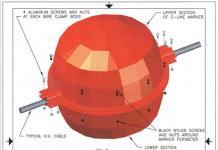Radioactive radiation (or ionizing radiation) is energy that is released by atoms in the form of particles or waves of an electromagnetic nature. Humans are exposed to such exposure through both natural and anthropogenic sources.
The beneficial properties of radiation have made it possible to successfully use it in industry, medicine, scientific experiments and research, agriculture and other fields. However, with the spread of this phenomenon, a threat to human health has arisen. A small dose of radioactive radiation can increase the risk of acquiring serious diseases.
The difference between radiation and radioactivity
Radiation, in a broad sense, means radiation, that is, the spread of energy in the form of waves or particles. Radioactive radiation is divided into three types:
- alpha radiation – flux of helium-4 nuclei;
- beta radiation – flow of electrons;
- Gamma radiation is a stream of high-energy photons.
The characteristics of radioactive radiation are based on their energy, transmission properties and the type of emitted particles.
Alpha radiation, which is a stream of corpuscles with a positive charge, can be delayed by thick air or clothing. This species practically does not penetrate the skin, but when it enters the body, for example, through cuts, it is very dangerous and has a detrimental effect on internal organs.
Beta radiation has more energy - electrons move at high speeds and are small in size. Therefore, this type of radiation penetrates through thin clothing and skin deep into the tissue. Beta radiation can be shielded using an aluminum sheet a few millimeters thick or a thick wooden board.
Gamma radiation is high-energy radiation of an electromagnetic nature that has a strong penetrating ability. To protect against it, you need to use a thick layer of concrete or a plate of heavy metals such as platinum and lead.
The phenomenon of radioactivity was discovered in 1896. The discovery was made by the French physicist Becquerel. Radioactivity is the ability of objects, compounds, elements to emit ionizing radiation, that is, radiation. The reason for the phenomenon is the instability of the atomic nucleus, which releases energy during decay. There are three types of radioactivity:
- natural – typical for heavy elements whose serial number is greater than 82;
- artificial – initiated specifically with the help of nuclear reactions;
- induced - characteristic of objects that themselves become a source of radiation if they are heavily irradiated.
Elements that are radioactive are called radionuclides. Each of them is characterized by:
- half-life;
- type of radiation emitted;
- radiation energy;
- and other properties.
Sources of radiation
The human body is regularly exposed to radioactive radiation. Approximately 80% of the amount received each year comes from cosmic rays. Air, water and soil contain 60 radioactive elements that are sources of natural radiation. The main natural source of radiation is considered to be the inert gas radon, released from the earth and rocks. Radionuclides also enter the human body through food. Some of the ionizing radiation to which people are exposed comes from man-made sources, ranging from nuclear power generators and nuclear reactors to radiation used for medical treatment and diagnostics. Today, common artificial sources of radiation are:
- medical equipment (the main anthropogenic source of radiation);
- radiochemical industry (extraction, enrichment of nuclear fuel, processing of nuclear waste and its recovery);
- radionuclides used in agriculture and light industry;
- accidents at radiochemical plants, nuclear explosions, radiation releases
- Construction Materials.
Based on the method of penetration into the body, radiation exposure is divided into two types: internal and external. The latter is typical for radionuclides dispersed in the air (aerosol, dust). They get on your skin or clothing. In this case, radiation sources can be removed by washing them away. External radiation causes burns to the mucous membranes and skin. In the internal type, the radionuclide enters the bloodstream, for example by injection into a vein or through a wound, and is removed by excretion or therapy. Such radiation provokes malignant tumors.
The radioactive background significantly depends on the geographical location - in some regions the level of radiation can exceed the average by hundreds of times.

The effect of radiation on human health
Radioactive radiation, due to its ionizing effect, leads to the formation of free radicals in the human body - chemically active aggressive molecules that cause cell damage and death.
Cells of the gastrointestinal tract, reproductive and hematopoietic systems are especially sensitive to them. Radioactive radiation disrupts their work and causes nausea, vomiting, bowel dysfunction, and fever. By affecting the tissues of the eye, it can lead to radiation cataracts. The consequences of ionizing radiation also include damage such as vascular sclerosis, deterioration of immunity, and damage to the genetic apparatus.
The system of transmission of hereditary data has a fine organization. Free radicals and their derivatives can disrupt the structure of DNA, the carrier of genetic information. This leads to mutations that affect the health of subsequent generations.
The nature of the effects of radioactive radiation on the body is determined by a number of factors:
- type of radiation;
- radiation intensity;
- individual characteristics of the body.
The effects of radioactive radiation may not appear immediately. Sometimes its consequences become noticeable after a significant period of time. Moreover, a large single dose of radiation is more dangerous than long-term exposure to small doses.
The amount of radiation absorbed is characterized by a value called Sievert (Sv).
- Normal background radiation does not exceed 0.2 mSv/h, which corresponds to 20 microroentgens per hour. When X-raying a tooth, a person receives 0.1 mSv.
- The lethal single dose is 6-7 Sv.

Application of ionizing radiation
Radioactive radiation is widely used in technology, medicine, science, military and nuclear industries and other areas of human activity. The phenomenon underlies devices such as smoke detectors, power generators, icing alarms, and air ionizers.
In medicine, radioactive radiation is used in radiation therapy to treat cancer. Ionizing radiation has made it possible to create radiopharmaceuticals. With their help, diagnostic examinations are carried out. Instruments for analyzing the composition of compounds and sterilization are built on the basis of ionizing radiation.
The discovery of radioactive radiation was, without exaggeration, revolutionary - the use of this phenomenon brought humanity to a new level of development. However, this also caused a threat to the environment and human health. In this regard, maintaining radiation safety is an important task of our time.
Passing through matter, radiation microparticles waste their energy in collisions with orbital electrons, as well as in interactions with powerful electric and magnetic fields when particles fly near the nucleus. Most of the collisions and interactions occur not with nuclei, but with electrons on the shells of the atom. Knocking an electron out of an atom leads to the formation of an ion, i.e., ionization.
The energy of particles emitted during radioactive decay is of the order of mega- or kiloelectronvolts, and in a single collision an average of about 33-35 eV of energy is absorbed (transferred to atoms of the medium), from which it follows that the waste of all the energy will require a large number of ionization events. For example, with an average energy of β-radiation 90Y equal to 930 keV, its complete absorption will occur in ~10.4 collisions.
The total path length of a particle depends on the density of the medium. In table 2.5 shows approximate values of the penetrating ability of various types of radiation on various materials. In general, the ratio of the penetrating power of different types of radiation can be represented as γ > β > α.

In addition to penetrating ability, another important indicator of radiation is ionization density, which is defined as the average number of ion pairs formed per unit path length of a particle. Naturally, both of these indicators are interrelated in an inverse relationship. The ionization density depends, among other things, on the size of the radiation particles: the larger the particles, the greater the probability of collisions when passing through the atoms of the medium and the higher the ionization density. The highest value of this indicator is for α- and n-radiations, much lower for β-radiations (flows of electrons and positrons), and very small for γ-photons, especially since the latter do not yet have an electric charge, and therefore cannot deflect in magnetic and electric fields in an atom. But the order of magnitude of the ionization density of α-, β- and γ-radiation in the same type of media differs in the ratio of approximately 10:4:10:2:1.
The trace of particle movement in a medium is called a track. From a collision with orbital electrons, the direction of motion of such a large particle as α (its mass is approximately 7400 times greater than the mass of an electron) practically does not change, but the trajectories of light particles (free electrons or positrons) turn out to be strongly broken and zigzag. Let us consider the features of the passage of different types of radiation through matter.
α-radiation. In accordance with the highest ionization density of α-particles, their range in all media is very small: even in air, α-radiation propagates over a distance not exceeding 3-7 cm, and in dense media the range is even shorter. In biological tissues, the range of an α particle rarely exceeds 40-60 µm, i.e. its effect is usually limited by the size of one cell. The low penetrating ability of α-radiation makes any protection from unclosed sources of α-radiation practically unnecessary.
β-radiation. The ranges of beta particles vary markedly depending on their energy. There are soft radiations with energies less than 0.5 MeV and hard radiations with energies greater than 1 MeV. The range of β-particles from hard emitters (for example, 32P or 90Y) reaches 10 m or more in air, but in dense media it is only a few mm. The actual range (according to the thickness of the material that completely absorbs radiation) is even less due to the zigzag trajectories of β-particles. Therefore, with surface soil contamination, external radiation from β-emitting isotopes (from radiostrontium, for example) does not pose a serious danger, since the radiation does not reach the soil surface when the radionuclide is already at a depth of more than 1 cm.
In the laboratory, organic glass screens up to 10 mm thick are used to protect against β-radiation. To work with soft β-emitters, even such protection is not required, since the maximum range of β-radiation in air from 14C (maximum energy 0.156 MeV) is only 15 cm, from tritium (2H, maximum energy 0.019 MeV) - less than 5 mm.
γ-radiation. In comparative terms, the penetrating power of γ-radiation is the greatest, however, taking into account the geometric scattering factor, which is proportional to the square of the distance, the real range of γ-sources in open areas is 200-300 m. With the help of airplanes or helicopters equipped with sensitive equipment, γ-radiation can identify and map the levels of radioactive contamination of an area; in cartography, this is done using the aerial gamma survey method. However, we must remember that the most reliable and accurate results are when flying at an altitude of 25-50 to 200-254) m, but not higher.
In dense media, γ-radiation can pass through tens and even hundreds of centimeters of thickness. To shield γ-radiation, materials with high density, such as lead, are chosen. The thickness of the shielding protection is determined by the overall activity of the source; for reliable protection, a lead thickness of up to 5-30 cm (or even more) may be required.
Neutron radiation. The absorption of neutrons in dense media occurs with a relatively high ionization density, so their penetrating ability is low. In the input, fast neutrons are slowed down to low energies at distances of the order of 8 cm, in soils or building structures - up to 20-40 cm. The mechanisms of neutron absorption are very specific, so it is necessary to select special materials to protect against fast or slow neutrons.
Ionizing radiation (hereinafter referred to as IR) is radiation whose interaction with matter leads to the ionization of atoms and molecules, i.e. this interaction leads to the excitation of the atom and the separation of individual electrons (negatively charged particles) from atomic shells. As a result, deprived of one or more electrons, the atom turns into a positively charged ion - primary ionization occurs. II includes electromagnetic radiation (gamma radiation) and flows of charged and neutral particles - corpuscular radiation (alpha radiation, beta radiation, and neutron radiation).
Alpha radiation refers to corpuscular radiation. This is a stream of heavy positively charged alpha particles (nuclei of helium atoms) resulting from the decay of atoms of heavy elements such as uranium, radium and thorium. Since the particles are heavy, the range of alpha particles in a substance (that is, the path along which they produce ionization) turns out to be very short: hundredths of a millimeter in biological media, 2.5-8 cm in air. Thus, a regular sheet of paper or the outer dead layer of skin can trap these particles.
However, substances that emit alpha particles are long-lived. As a result of such substances entering the body with food, air or through wounds, they are carried throughout the body by the bloodstream, deposited in organs responsible for metabolism and protection of the body (for example, the spleen or lymph nodes), thus causing internal irradiation of the body . The danger of such internal irradiation of the body is high, because these alpha particles create a very large number of ions (up to several thousand pairs of ions per 1 micron of path in tissues). Ionization, in turn, determines a number of features of those chemical reactions that occur in matter, in particular in living tissue (the formation of strong oxidizing agents, free hydrogen and oxygen, etc.).
Beta radiation(beta rays, or stream of beta particles) also refers to the corpuscular type of radiation. This is a stream of electrons (β- radiation, or, most often, just β-radiation) or positrons (β+ radiation) emitted during the radioactive beta decay of the nuclei of certain atoms. Electrons or positrons are produced in the nucleus when a neutron converts to a proton or a proton to a neutron, respectively.
Electrons are much smaller than alpha particles and can penetrate 10-15 centimeters deep into a substance (body) (cf. hundredths of a millimeter for alpha particles). When passing through matter, beta radiation interacts with the electrons and nuclei of its atoms, expending its energy on this and slowing down the movement until it stops completely. Due to these properties, to protect against beta radiation, it is enough to have an organic glass screen of appropriate thickness. The use of beta radiation in medicine for superficial, interstitial and intracavitary radiation therapy is based on these same properties.
Neutron radiation- another type of corpuscular type of radiation. Neutron radiation is a flow of neutrons (elementary particles that have no electrical charge). Neutrons do not have an ionizing effect, but a very significant ionizing effect occurs due to elastic and inelastic scattering on the nuclei of matter.
Substances irradiated by neutrons can acquire radioactive properties, that is, receive so-called induced radioactivity. Neutron radiation is generated during the operation of particle accelerators, in nuclear reactors, industrial and laboratory installations, during nuclear explosions, etc. Neutron radiation has the greatest penetrating ability. The best materials for protection against neutron radiation are hydrogen-containing materials.
Gamma rays and x-rays belong to electromagnetic radiation.
The fundamental difference between these two types of radiation lies in the mechanism of their occurrence. X-ray radiation is of extranuclear origin, gamma radiation is a product of nuclear decay.
X-ray radiation was discovered in 1895 by the physicist Roentgen. This is invisible radiation capable of penetrating, although to varying degrees, into all substances. It is electromagnetic radiation with a wavelength of the order of - from 10 -12 to 10 -7. The source of X-rays is an X-ray tube, some radionuclides (for example, beta emitters), accelerators and electron storage devices (synchrotron radiation).
The X-ray tube has two electrodes - the cathode and the anode (negative and positive electrodes, respectively). When the cathode is heated, electron emission occurs (the phenomenon of the emission of electrons by the surface of a solid or liquid). Electrons escaping from the cathode are accelerated by the electric field and strike the surface of the anode, where they are sharply decelerated, resulting in X-ray radiation. Like visible light, X-rays cause photographic film to turn black. This is one of its properties, fundamental for medicine - that it is penetrating radiation and, accordingly, the patient can be illuminated with its help, and since Tissues of different density absorb X-rays differently - we can diagnose many types of diseases of internal organs at a very early stage.
Gamma radiation is of intranuclear origin. It occurs during the decay of radioactive nuclei, the transition of nuclei from an excited state to the ground state, during the interaction of fast charged particles with matter, the annihilation of electron-positron pairs, etc.
The high penetrating power of gamma radiation is explained by its short wavelength. To weaken the flow of gamma radiation, substances with a significant mass number (lead, tungsten, uranium, etc.) and all kinds of high-density compositions (various concretes with metal fillers) are used.
Why do I have to complete a CAPTCHA?
Completing the CAPTCHA proves you are a human and gives you temporary access to the web property.
What can I do to prevent this in the future?
If you are on a personal connection, like at home, you can run an anti-virus scan on your device to make sure it is not infected with malware.
If you are at an office or shared network, you can ask the network administrator to run a scan across the network looking for misconfigured or infected devices.
Cloudflare Ray ID: 41e7064ef5d56403 Your IP: 5.189.134.229 Performance & security by Cloudflare
20. IONIZING RADIATION AND ITS IMPACT ON THE BODY
Ionization called the formation of positive and negative ions and free electrons from electrically neutral atoms and molecules. Atmospheric ionization– the formation of positive and negative ions (atmospheric ions) and free electrons in atmospheric air under the influence of solar radiation. As a result of ionization, atmospheric air acquires electrical conductivity and special healing properties.
Radioactive radiation (alpha, beta particles, neutrons, gamma quanta) have different penetrating and ionizing abilities. Have the lowest penetrating ability alpha particles(helium nuclei), the path length of which in human tissue is a fraction of a millimeter, and in the air - several centimeters. They cannot pass through a sheet of paper, but have the greatest ionizing ability.
Beta particles have greater penetrating power, but the ionizing ability of beta particles (electrons, positrons) is 1000 times less than that of alpha particles, and when traveling 1 cm in the air they form several tens of pairs of ions.
Gamma rays belong to electromagnetic radiation and have high penetrating power (in the air - up to several kilometers); their ionizing ability is significantly less than that of alpha and beta particles. Neutrons(particles of the nucleus of an atom) have significant penetrating ability, which is explained by their lack of charge. Their ionizing ability is associated with induced radioactivity, which is formed as a result of a neutron entering the nucleus of an atom of a substance: thereby its stability is disrupted and a radioactive isotope is formed. The ionizing ability of neutrons under certain conditions can be similar to alpha radiation.
Ionizing radiation, Having a high penetrating ability, they pose a danger to a greater extent when exposed to external irradiation, and alpha and beta radiation - when directly affecting body tissues when entering the body with inhaled air, water, or food.
With external irradiation of the entire body or individual parts of it (local exposure) or internal irradiation of humans or animals in damaging doses, a disease called radiation sickness can develop.
Currently radiation injury people may be associated with violation of radiation safety rules and standards when performing work with sources of ionizing radiation, during accidents at radiation hazardous facilities, during nuclear explosions, etc.
It is known that the source of radiation is radioactive nuclei that can spontaneously decay. The very word “radioactive” evokes fear and rejection, while it only means the instability of individual isotopes of various elements. Let us note that natural radioactive nuclei have always existed, before and after the advent of nuclear energy. Any thing, any material object that surrounds us, contains a certain proportion of radionuclides (which have nothing to do with the nuclear industry) capable of decaying and emitting ionizing radiation - the notorious radiation. It has been established that in earlier geological periods the natural background radiation on our planet was much higher than it is now.
There are three main types of radiation emitted by radioactive nuclei.
- alpha radiation
- It is a stream of alpha particles consisting of two protons and two neutrons (actually, these are the nuclei of helium atoms) formed as a result of the alpha decay of heavy nuclei.
- beta radiation
- This is a stream of electrons or positrons (beta particles) formed as a result of the beta decay of radioactive nuclei.
- gamma radiation
- Gamma radiation accompanies alpha or beta decay and is a stream of gamma quanta, being, in fact, electromagnetic radiation - that is, it has a wave nature similar to the nature of light. The difference is that gamma quanta have much higher energy than light quanta and therefore have greater penetrating power.
Penetrating power of radiation
Alpha particles have the smallest penetrating ability: the range in air is several centimeters, in biological tissue - fractions of a millimeter. Therefore, thick clothing provides the necessary and sufficient degree of protection from external alpha radiation. Beta particles (electron flow) have greater penetrating power: their range in the air is several meters, in biological tissue - up to several centimeters. Therefore, when working with sources of hard beta radiation, there is a need to use additional protection (protective screens, containers). Finally, gamma radiation has the greatest penetrating ability: electromagnetic waves are able to pass through the body. Sources of powerful gamma radiation require heavier protection: lead screens, thick-walled concrete structures.
In general, it is important to understand that radionuclides are not the only sources of radiation. In particular, when undergoing an annual fluorographic examination or having a computed tomography scan, we are exposed to x-ray radiation, which (like gamma radiation) is a stream of quanta. This means that the two types of radiation, having different origins, are equally classified as penetrating radiation. In other words, although the X-ray tube does not use radionuclides, it also produces ionizing radiation.
Another source of radiation not related to natural and artificial radionuclides is cosmic radiation. In outer space, this radiation has enormous energy, but when passing through the atmosphere, it is significantly weakened and does not have a significant effect on humans. As altitude increases, background radiation also increases - therefore, people who frequently travel by air receive an increased dose of radiation; Astronauts who go into outer space receive an even larger dose.
If we compare the contribution of various sources to the dose received by the average Russian, we get the following picture: about 84.4% of the dose he will receive from natural sources, 15.3% from medical sources, 0.3% from man-made sources (nuclear power plants and other enterprises in the nuclear industry, this also includes the consequences of nuclear explosions). In the structure of natural sources, one can distinguish radon (50.9% of the total dose), terrigenous radiation caused by radionuclides located in the ground (15.6%), cosmic radiation (9.8%), and, finally, internal radiation due to radionuclides present in the human body (potassium-40, as well as radionuclides coming from water, air, food) - 8.1%. Of course, these figures are arbitrary and vary depending on the region, but the overall ratio always remains constant.
Radioactive radiation (alpha, beta particles, neutrons, gamma quanta) have different penetrating and ionizing abilities. Alpha particles (helium nuclei) have the least penetrating ability; their travel length in human tissue is fractions of a millimeter and in air - several centimeters.
They cannot even pass through a sheet of paper, but they have the greatest ionizing ability. Beta particles, compared to alpha particles, have a greater penetrating ability (the travel length in air is meters) and are no longer retained by paper, but by harder materials (aluminum, plexiglass, etc.). However, the ionizing ability of beta particles (electrons, positrons) is 1000 times less than alpha particles and, when traveling 1 cm in the air, forms several tens of pairs of ions. Gamma quanta by their nature are electromagnetic radiation and have high penetrating power ( in the air up to several kilometers); their ionizing ability is significantly less than that of alpha and beta particles. Neutrons (particles of the atomic nucleus) also have significant penetrating ability, which is explained by their lack of charge. Their ionizing ability is associated with the so-called “induced radioactivity", which is formed as a result of the “hit” of a neutron into the nucleus of an atom of a substance and thereby disrupts its stability, forms a radioactive isotope. The ionizing ability of neutrons under certain conditions can be similar to alpha radiation.
Ionizing radiation, which has a high penetrating ability, poses a greater danger when exposed to external radiation, and alpha and beta radiation when directly affecting body tissues when entering the body with inhaled air, water, or food.
With external irradiation of the entire body or individual parts of it (local exposure) or internal irradiation of humans or animals in damaging doses, a disease called radiation sickness can develop.
Currently, radiation injury to people may be associated with violation of radiation safety rules and regulations when performing work with sources of ionizing radiation, during accidents at radiation hazardous facilities, during nuclear explosions, etc. Depending on the dose received and the duration of exposure, victims may develop acute or chronic radiation sickness.
The impact of emergencies on a person’s mental state and his…
An emergency is a disruption of the normal living conditions of people in a certain territory.
Acute radiation sickness, its stages
Acute radiation sickness develops with a single total body irradiation in a damaging manner.
− Examer from Taganrog;
− Teacher Dumbadze V.A.
from school 162 of the Kirov district of St. Petersburg.
Our VKontakte group
Mobile applications:
Which of the three types of radiation (-, - or - radiation) has the greatest penetrating power?
1) - radiation
2) - radiation
3) - radiation
4) all to approximately the same extent
-radiation has the greatest penetrating ability, and -radiation has the least. If -particles are absorbed by a sheet of cardboard, then sufficiently thick lead plates are needed to absorb -quanta.
Which radiation has the greatest penetrating power?
Highly radioactive background (smog) is a product of the decay of atoms with subsequent changes in their nuclei. Elements with this ability are considered highly radioactive. Each compound is endowed with a certain ability to penetrate the body and harm it. They are natural and artificial. Gamma radiation has the strongest penetrating ability - its particles are able to pass through the human body and are considered very dangerous to human health.
People working with them must wear protective clothing, since their impact on health can be very strong - it depends on the type of radiation.
Types and characteristics of radiation
There are several types of radiation. People in their line of work have to deal with it - some every day, some from time to time.
Helium particles carry a negative charge and are formed during the decay of heavy compounds of natural origin - thorium, radium, and other substances of this group. Streams with alpha particles cannot penetrate solid surfaces and liquids. To protect against them, a person just needs to be dressed.
 This type of radiation has more power compared to the first type. For protection, a person will need a dense screen. The decay product of several radioactive elements is a flux of positrons. They are separated from electrons only by charge - they carry a positive charge. If they are exposed to a magnetic field, they deflect and move in the opposite direction.
This type of radiation has more power compared to the first type. For protection, a person will need a dense screen. The decay product of several radioactive elements is a flux of positrons. They are separated from electrons only by charge - they carry a positive charge. If they are exposed to a magnetic field, they deflect and move in the opposite direction.
It is formed during the decay of nuclei in many radioactive compounds. The radiation has a high penetrating ability. Characterized by hard electromagnetic waves. To protect against their effects, you will need screens made of metals that can well protect a person from penetration. For example, made of lead, concrete or water.
These rays have great penetrating power. Can be formed in X-ray tubes, electronic installations such as betatrons and the like. The nature of the action of these radioactive streams is very strong, which suggests that the X-ray beam is endowed with the ability of strong penetration, and therefore dangerous.
In many ways similar to the above, it differs only in the length and origin of the rays. The X-ray flux has a longer wavelength with a low radiation frequency.
Ionization here is carried out mainly by knocking out electrons. And due to the consumption of its own energy, it is produced in small quantities.
Undoubtedly, the rays of this radiation, especially hard ones, have the greatest penetrating ability.
What type of radiation is most dangerous for people?
The hardest quanta are X-ray waves and gamma radiation. They have the shortest waves, therefore, they bring more treachery and danger to the human body. Their insidiousness is explained by the fact that a person does not feel their influence, but clearly feels the consequences. Even at low doses of radiation, irreversible processes and mutations occur in the body.
 The transmission of information within a person is electromagnetic in nature. If a powerful radiation beam penetrates the body, this process is disrupted. A person initially feels a slight malaise, and later pathological disorders - hypertension, arrhythmia, hormonal disorders and others.
The transmission of information within a person is electromagnetic in nature. If a powerful radiation beam penetrates the body, this process is disrupted. A person initially feels a slight malaise, and later pathological disorders - hypertension, arrhythmia, hormonal disorders and others.
Alpha particles have the lowest penetration ability, so they are considered the safest, so to speak, for humans. Beta radiation is much more powerful and its penetration into the body is more dangerous. Radiation from gamma particles and X-rays has the greatest penetrating power. They are able to pass right through a person, it is much harder to protect against them, and only a concrete structure or a lead screen can stop them.
How is electromagnetic smog determined in a residential apartment?
 Every comfortable apartment has a certain level of radioactive waves. They come from household electronic appliances and devices. Electromagnetic smog is determined by a special device - a dosimeter. It’s good when it is present, but if it is not, then they can be identified in another way. To do this, you need to turn on all electrical devices and use a regular radio to check the radiation level of each of them.
Every comfortable apartment has a certain level of radioactive waves. They come from household electronic appliances and devices. Electromagnetic smog is determined by a special device - a dosimeter. It’s good when it is present, but if it is not, then they can be identified in another way. To do this, you need to turn on all electrical devices and use a regular radio to check the radiation level of each of them.
If interference occurs in it, squeaking, extraneous noise and crackling are heard, then there is a source of smog nearby. And the more tangible they are, the more powerful and stronger the electromagnetic radiation emanates from it. The source of smog can be the walls of the apartment. Any actions taken by residents to protect their own bodies from their effects are a guarantee of health.
Beta radiation is a stream of electrons or positrons emitted by the nuclei of atoms of radioactive substances during radioactive decay. The maximum range in air is 1800 cm, and in living tissues - 2.5 cm. The ionizing ability of p-particles is lower, and the penetrating ability is higher than that of oc-particles, since they have a significantly smaller mass and have the same energy as a-particles have less charge.
Neutron radiation is a stream of neutrons that convert their energy in elastic and non-elastic interactions with atomic nuclei. During inelastic interactions, secondary radiation arises, which can consist of both charged particles and gamma quanta (gamma radiation). In elastic interactions, ordinary ionization of a substance is possible. The penetrating power of neutrons is high.
Water is the most widely used extinguishing agent. It has a significant heat capacity and a very high heat of evaporation (-2.22 kJ/g), due to which it has a strong cooling effect on the fire. The most significant disadvantages of water include its insufficient wetting (and, therefore, penetrating) ability when extinguishing fibrous materials (wood, cotton, etc.) and high mobility, leading to large losses of water and damage to surrounding objects. To overcome these disadvantages, surfactants (wetting agents) and viscosity-increasing substances (sodium carboxymethylcellulose) are added to water.
In explosive areas, radioisotope neutralizers are used, the action of which is based on the ionization of air by the alpha radiation of plutonium-239 and beta radiation of promethium-147. The penetrating ability of alpha particles in the air is several centimeters, so the use of an alpha source is safe for personnel.
Depending on the size of the droplets, the jets are droplet (droplet diameter > 0.4 mm), atomized (droplet diameter 0.2-0.4 mm) and finely atomized (fog-like, droplet diameter
When extinguishing with water jets, their penetrating ability is essential, which is determined by the pressure
The pressure of the water jet is determined experimentally by the speed of movement of the drops and the air flow they entrain. Penetration ability decreases with decreasing jet pressure and droplet size. When the droplet diameter is more than 0.8 mm, the penetrating ability does not depend on the jet pressure.
Radioactive isotopes emit various types of radiation invisible to the eye: a-rays (alpha rays), 3-rays (beta rays), rays (gamma rays) and neutrons. They are able to penetrate solid, liquid and gaseous bodies, and for different types of radiation the penetrating ability is not the same: rays have the greatest penetrating ability. In order to detain them, a layer of lead approximately 15 cm thick is needed.)




















